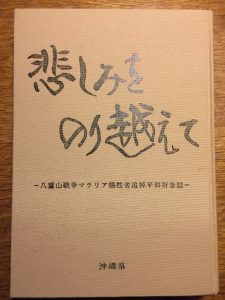I am a historian who specializes in modern Japanese history. I am especially interested in mass cultural phenomena, such as folklore, historical memory and social movements. In other words, I am interested in the stories people tell to make sense of a complicated changing world and the traumatic pasts that have shaped their societies.
My first book, A Discipline on Foot: Inventing Japanese Native Ethnology, 1910-1945, investigated the ways that folk studies in Japan was built into a widely recognized academic discipline and popular pastime. The field has been largely, and appropriately, understood as the product of a small number of important modern intellectuals. But I was particularly interested in how their project took roots in popular consciousness, how large numbers of people recognized in folklore studies a way to pursue their own interests in the world around them.
Since I began teaching a course on Memories of WWII in the Pacific with Alice Yang, I have also been working on the ways that WWII has been remembered in Japan. Although the subject matter is very different, the basic issue is consistent with my earlier work on folk studies: how do people make sense of past trauma through stories, rituals and monument-making.

I am currently working on a book that explores these issues in a setting of great importance to both Japanese folk studies and Japanese war memories: Okinawa. In the early 1990s, after the passage of redress for Japanese American internment and coincident with the emergence of demands for reparations from the Japanese state from individuals throughout Asia for victimization during WWII—most famously the so-called “comfort women”—a movement for reparations emerged from the small island group in Okinawa prefecture known as Yaeyama. During the spring and summer of 1945, as the Battle of Okinawa raged on the main island of the prefecture, the residents of the Yaeyama islands were forcibly evacuated from their homes and removed to areas known to be malarial. By the end of the summer, nearly one-quarter of the population had died of the disease and countless more suffered horribly, with some communities experiencing infection rates in the 90% range. The book traces the history of malaria in Yaeyama, the role of the state (both the Ryukyuan kingdom and the modern Japanese state) and industry in the management and continuation of malaria, the strategies of the reparations campaign and the themes of the memories of survivors as seen in their testimonies, memorials and a museum. The book is provisionally called “Mass Murder by Mosquito: Imperialism, Science and War Memory in Yaeyama.”
I have another book project that explores the formation of war memories in Japan in the first two decades after the war under American occupation and alliance. In much of the popular discourse on war memories in Japan, the role of the United States—as occupier, then ally—in the formation of major Japanese war memory frames is ignored. This book explores the role of Occupation goals and policies and the demands of the post-Occupation alliance in the emergence of a conservative “peace discourse” in Japan, by examining three case studies of unusual war monuments that, in some ways, should not exist. The book is provisionally called “Hidden in Plain Sight: The Afterlives of War Monuments in Postwar Japan.”
I am also working with a group of undergraduates and staff here at UC Santa Cruz on a photo exhibition and historical research project on the early years of the American occupation of Okinawa. Using a set of about 150 photographs taken in Okinawa in 1952 by an American Army captain and dentist, Charles Gail, and a large collection of primary source documents collected by students at the National Archives in Washington, D.C., The Gail Project team is exploring how Okinawa—its people and landscape—were understood and transformed by American policy-makers, servicemen and their families. At the same time, the project is hoping to develop a robust collaboration with colleagues in Okinawa, to gather Okinawan perspectives, through oral histories and written records, on the period when the American military base complex was established.
